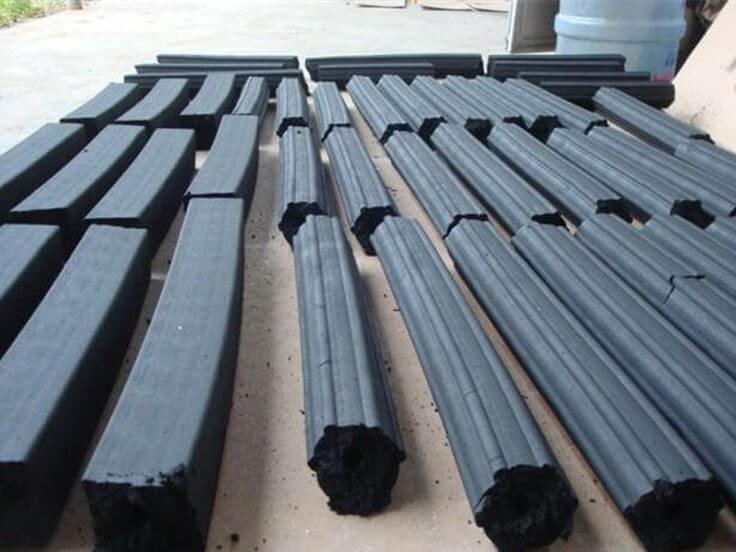
– cut supplying expenses
Table of Contents
ToggleSo, one of the best to solve a healthy cost structure is by knowing your cash flow first. What is your income? What are your assets? What are your expenses? And what are your business liabilities?
For you especially importers, you need to know the cash flow statement in the most detailed way. Why? Without a detailed cash flow statement, sometimes you will be unaware of where your cost is going.
You need to investigate your liabilities, let’s say you buy coconut charcoal briquettes from supplier A for USD 1500:
Liabilities example 1 :
This is not a good example of knowing your cashflow, because is not detailed. If you want your cash flow to be more deeply informed, you can analyze it yourself or you can also ask your suppliers or every other company that you worked with, and ask them where all your money goes.
Liabilities example 2:
– Products = USD 1200/ Metric Tons
– Packaging = USD 100/ Metric Tons
# Inner Box = USD 100/ Metric Tons
# Master Box = USD 10/ Metric Tons
– Incoterms (FOB) = USD 200/ Metric Tons
– Export Documentations Requirement: USD 30
# Invoice = USD 0
# Packing List = USD 0
# Bill of Lading = USD 10
# MSDS = USD 5
# Sales Contract = USD 0
> Additional Documents:
# ROA = USD 5
# SHT = USD 10
# COO = USD 0
– Dangerous Goods Requirement: USD 560
# Thermal blanket = USD 20
# Refrigerator container = USD 500
# Vanning Survey = USD 20
# Factory Audit = USD 20
If the incoterms is FOB, you also need to see your other expenses besides the supplier price:
– Products = USD 1200/ Metric Tons
– Packaging = USD 100/ Metric Tons
# Inner Box = USD 100/ Metric Tons
# Master Box = USD 10/ Metric Tons
– Incoterms (FOB) = USD 200/ Metric Tons
– Export Documentations Requirement: USD 30
# Invoice = USD 0
# Packing List = USD 0
# Bill of Lading = USD 10
# MSDS = USD 5
# Sales Contract = USD 0
> Additional Documents:
# ROA = USD 5
# SHT = USD 10
# COO = USD 0
– Dangerous Goods Requirement: USD 560
# Thermal blanket = USD 20
# Refrigerator container = USD 500
# Vanning Survey = USD 20
# Factory Audit = USD 20
Don’t forget about your other expenses such as the marketing budget
– Products = USD 1200/ Metric Tons
– Packaging = USD 110/ Metric Tons
# Inner Box = USD 100/ Metric Tons
# Master Box = USD 10/ Metric Tons
– Incoterms (FOB) = USD 200/ Metric Tons
– Export Documentations Requirement: USD 30
# Invoice = USD 0
# Packing List = USD 0
# Bill of Lading = USD 10
# MSDS = USD 5
# Sales Contract = USD 0
> Additional Documents:
# ROA = USD 5
# SHT = USD 10
# COO = USD 0
– Dangerous Goods Requirement: USD 560
# Thermal blanket = USD 20
# Refrigerator container = USD 500
# Vanning Survey = USD 20
# Factory Audit = USD 20
– ads = USD 200/week
# FB ads = USD 100/week
# Google ads = USD 100/week
You also need to add other expenses such as company taxes, etc. The more detailed the cash flow, the better. To see more about what is your import expenses, you can see our article here:
After you already investigated your cashflow, if your report is already detailed, then you can see what liabilities you must lower, you can lower, or you want to lower. It can rather be by cutting the cost or just lowering it.
When you lower it or cut it, also think about the outcomes. Not just the positive, but also the negative outcomes or the worst circumstances.
Maybe you can cut something that is not required. Because when you cut it, the export activities will be also done (unless some regulations in your country need the complete requirement.
Or something like an additional cost, maybe you can cut it also such as additional export documents (even though is not recommended, because the cost is not too much and it’s valuable) or you can cut something else in your marketing budget or in your supplier price.
Maybe in that example, you can cut your expenses from the SEO Services, and you can make your Search engine articles yourself. You can also lower the supplier price by cutting the packaging cost such as the inner box (small box). So you just order the products by the master box only (big box).
If you want to know what else in the supplier price that you can cut off, you can also see our article here:
– marketing budget
So, there are some reasons why we want to detail this marketing budget expenses. Because most charcoal briquette businesses are most likely to burn their cost and not get an effective return on investment (ROI).
Why is that? There are some factors that you need to consider:
Demand seasonal means that consumers only buy the product in the situational moments, the demand will grow higher in a particular moment, and then the trend will go lower over time, but potentially the trend will be up again.
For example, if the charcoal product is for shisha users, sometimes the demand will be stable compared to charcoal products for warming your house in the cold winter.
Grilling is sometimes used in a specific moment or season. But basically, it depends on your market behavior, because different regions and geography affect your market behavior.
To research this, you can analyze it by using Google Trends or by doing a survey. This strategy can help you to collect more data and have more accurate answers.